By Michelle Nichols
In 1970 Reverend Michiel Groenewegen was appointed as the new minister for St. Andrews Presbyterian Church in Riverstone and was formerly from St. Mark’s at Collaroy Plateau. Michiel was a young, enthusiastic minister and proficient musician, who had the ability of finding the best in people. He was accompanied by his wife Margaret and they were affectionately known as “Mr G” and “Mrs G” by the congregation.
One of the most memorable undertakings of Michiel’s time in Riverstone was the establishment of the musical group, St. Andrews Players. At that time, there was little entertainment around Riverstone, and the musicals seemed to fill the gap. It began as a group from the Presbyterian Church but grew to involve other congregations as well as members of the Riverstone Community. Some members started out helping behind the scenes including Ern Nichols and Howard Voysey but before long they were encouraged to participate on stage.
The first production by St. Andrews Players was Gilbert & Sullivan’s musical operetta “HMS Pinafore” in 1971. The English duo of songwriter W. S. Gilbert (1836-1911) and the composer Arthur Sullivan (1842-1900) created fourteen operettas in the late nineteenth century which are still popular today. This first play was one of the hardest as members had to be ‘encouraged’ to step outside their comfort zone and take on the persona of some of the absurd characters in Pinafore. The action took place on a naval quarterdeck in Portsmouth in 1878. Michiel was not only the director and producer but also played one of the lead characters, Sir Joseph Porter with Kevin Harkness as Ralph Rackstraw, Stan Pardy as Dick Deadeye and Maisie Gillespie as Little Buttercup. Many other locals stepped up to sing in the chorus including couples Geoff & Win King, Joy & Hilton Hillier and Sam & Mavis Lane. An operetta requires a musician and the pianist was Joyce Nichols, who was one of the organists at St. Andrews Church.
The next production was “Ruddigore” performed in 1972 after only three months of rehearsal. This was a more impressive effort than Pinafore with lavish costumes and sets. Ruddigore or the Witches Curse, was the melodramatic tale which included mistaken identities, ghostly ancestors and of course, villains. The late Maisie Gillespie recalled playing Dame Hannah and in one poignant duet she was to place her head on the shoulder of Howard Voysey. As she was only five foot and her ‘beloved’ was over 6 foot, s
he had to settle on laying her head on his waist and “this caused great mirth in the audience!”
As time went on Michiel nurtured the players, and their performances were enhanced through confidence and practise. Eventually members of the church and community were keen to join the cast or get involved in behind the scenes. Each performance involved the players who had to learn parts and act, (both speaking and singing) as well as sets painted and props to be made, costumes created and fitted, hair and make-up, venues, tickets and programs and publicity, an enormous effort for a small band of enthusiasts. Proceeds from the performances went towards the building fund at St. Andrews, to build a new church on their site on the corner of Garfield Road and Oxford Street.
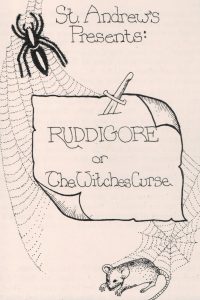
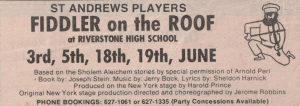
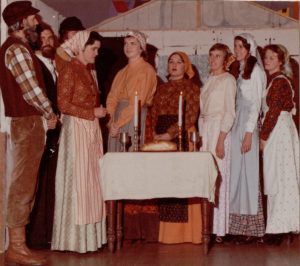
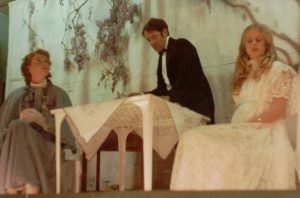
In 1973 the Players performed “The Gondoliers” which involved kidnappings, a kingdom ruled by two gondoliers and unrequited love. When Maisie Gillespie one of the main singers of the two previous shows was unable to take part due to ill-health, seventeen year old John Matthews stepped in and played the demanding role of the Duchess.
The next musical from the Players was the two-act operetta “The Sorcerer” another comedy by Gilbert & Sullivan, performed in 1974. This story focussed on Alexis who obtained a special love potion that leads everyone falling in love with unsuitable partners. Leads included John Baltaks, Howard Voysey, Dawn Keenan and Maisie Gillespie. The Headmistress of Riverstone Infants School, Miss Lorna Campbell, conducted the music for this play. Although many of the players were senior citizens and took up the challenge with gusto, a number of young folk took part in the musicals both on stage and off. Romance bloomed for some of the Players in real life as well with a number of marriages taking place as a result, including Alan Brooks and Barbara Fairhall.
The biggest undertaking by St. Andrews Player was “Fiddler on the Roof” in 1975 which had a budget of about $4000, which was a lot of money in those days. It was set in Russia at the turn of the century, it is the story of how a Jewish family deal with traditions in a changing world, told through a series of memorable songs. This was a huge production and included fifty plus performers with about 150 people involved in the overall production. It was held at the newly opened auditorium at Riverstone High School and had great reviews in the media. Tickets were $2 each with pensioners and children half price. Some of the performers had to learn new techniques including Alan Brookes and Bruce McCaull who had to perform the Russian Cossack bottle dance. The cast included Michiel as Tevye and his wife Golde played by Val Voysey with Barbara Fairhall, Glenda Baltaks, Susan Ferguson, Jenny Voysey and Michelle Nichols as the daughters. The Fiddler was played by Kerry Pearce with additional music from organist Joyce Nichols, violinist Judy Matling, drummer Christine Brooks and percussionist Gwen Ferguson.
The Players didn’t always perform musicals. The Oscar Wilde play, “The Importance of Being Earnest” which first premiered in 1895, was performed in Riverstone in the mid-1970s. The story focuses on two bachelors, how they contrived a deception, and the lengths they went to not be caught out. Some of the performers included Karen Nichols, Michiel, Margaret Groenewegen and Bruce McCaull.
The shows were held locally, often to capacity crowds, at the Frank Godfrey Memorial Hall in Elizabeth Street, Riverstone, Schofields Community Hall in Railway Terrace and Riverstone Bowling Club. The shows also travelled to Lalor Park, Collaroy Plateau, Mt Druitt and Epping for special appearances. It was often remarked how well the performances were presented and this was due to the meticulous management by Mr G. He not only performed in the plays but produced and directed. His vision was translated with assistance of many, however a number of key people worked tirelessly behind the scenes, such as Bertha O’Loughlin, who was extremely helpful in the costume department, Jim Ferguson with sets and lightning and Jenny Nichols on the backdrops and artwork. Everyone chipped in to help the performances accomplish a sense of professionalism, despite the fact they were only amateurs.
“Pirates of Penzance” was performed after the Groenewegen family left Riverstone, in 1977, and was produced by Michael Baltaks. It remains one of Gilbert & Sullivan’s most popular pieces with many well-known songs including the Major-General’s song. A performance of this play was held at Glenbrook but eventually St. Andrews Players disbanded.
Bruce McCaull highlighted that being involved with St. Andrews Players gave “a great sense of everybody working together.” Joyce Nichols, who played the piano and organ for all of the musicals, said “her music expectations reached new wonderful levels” and remembers the enjoyment of being part of such an exciting and nurturing group. It was a common theme for those fondly reminiscing, the camaraderie and fellowship of St. Andrews Players.
Special thanks to Michiel Groenewegen, Bruce McCaull, Joyce Nichols, Maisie Gillespie and Mary Pitt for their assistance with preparing this article. Photos courtesy of Michelle Nichols.
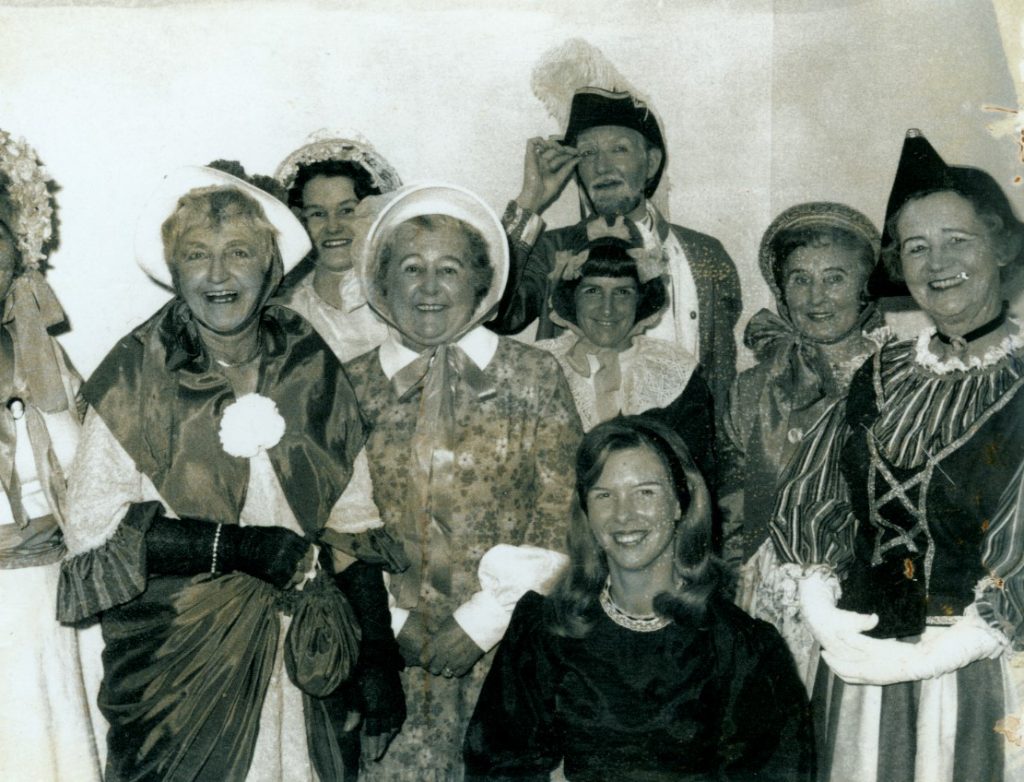
Michiel Groenewegen, Joy Wells, Marion Smith, Dot Vaughan and Dawn Keenan (front).
Photo: Maisie and Gordon Gillespie
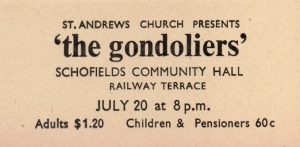
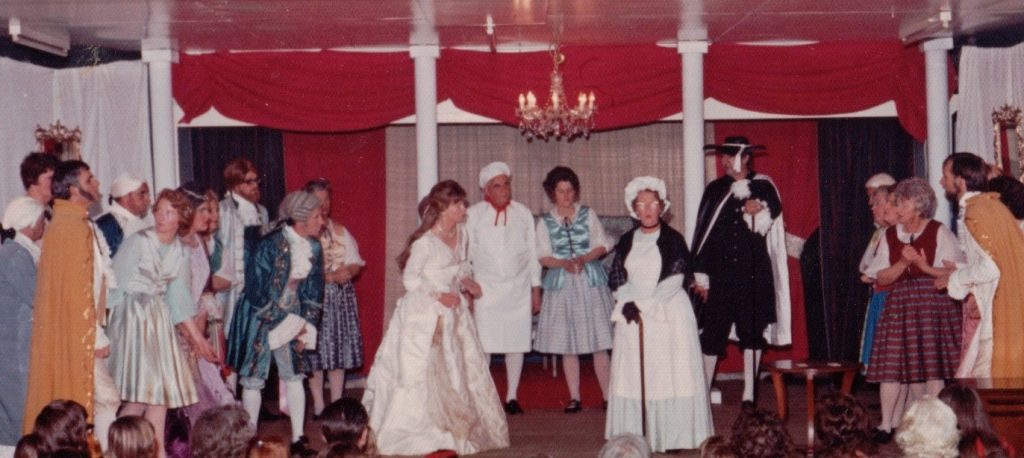
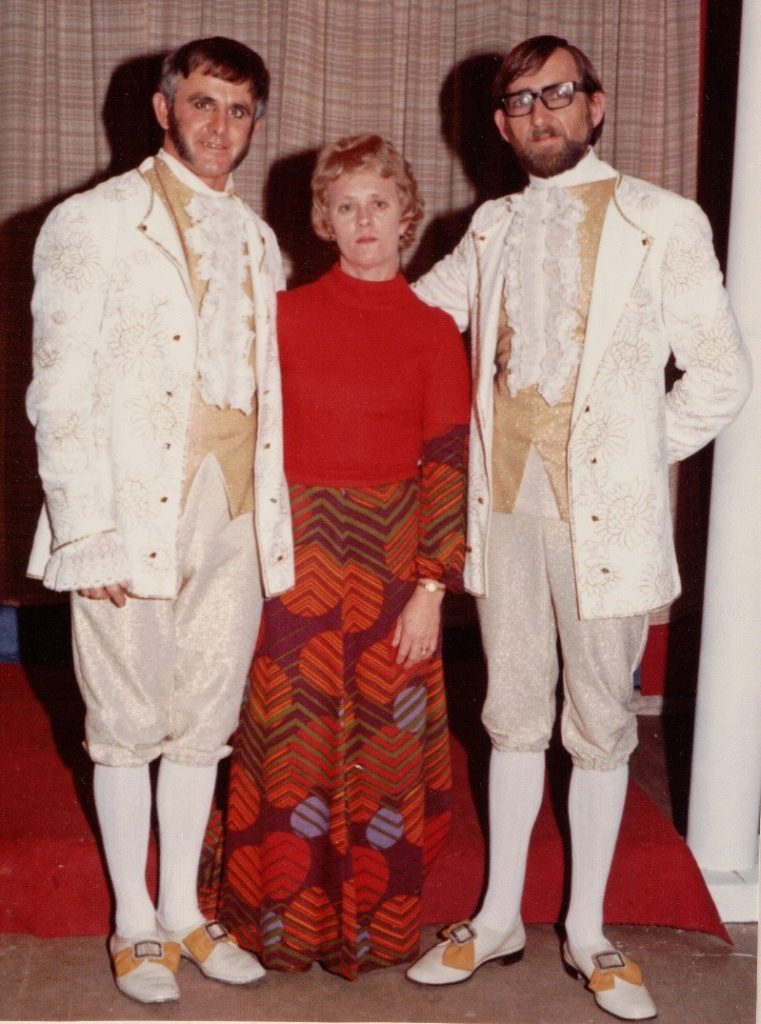
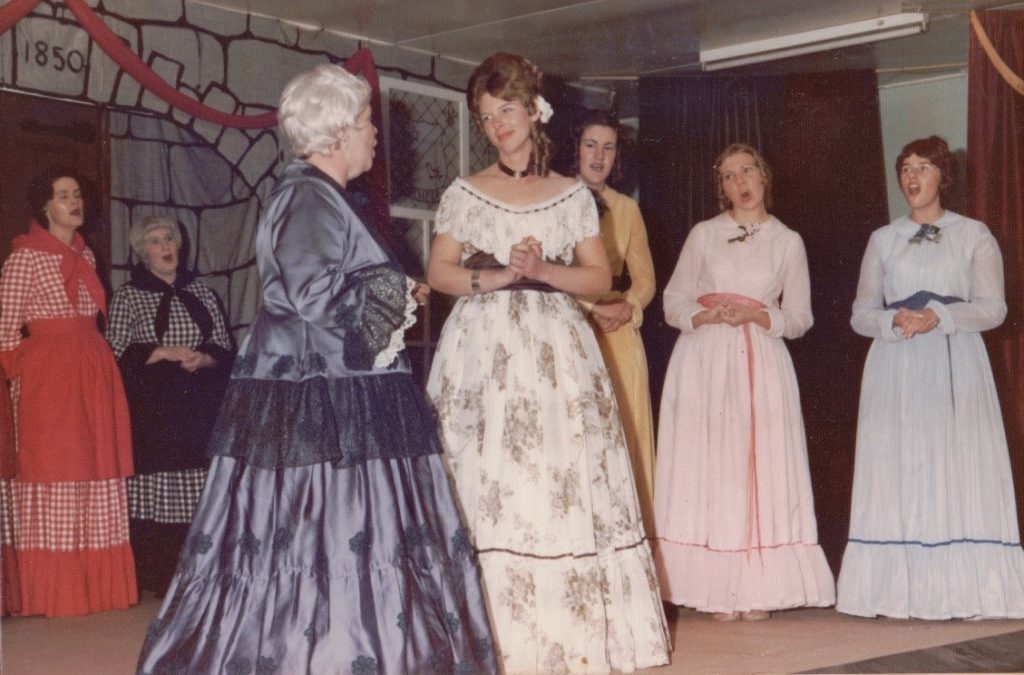
Back Row: Val Voysey, Marion Smith, Cheryl Voysey, Mary Gillespie and Susan Ferguson.
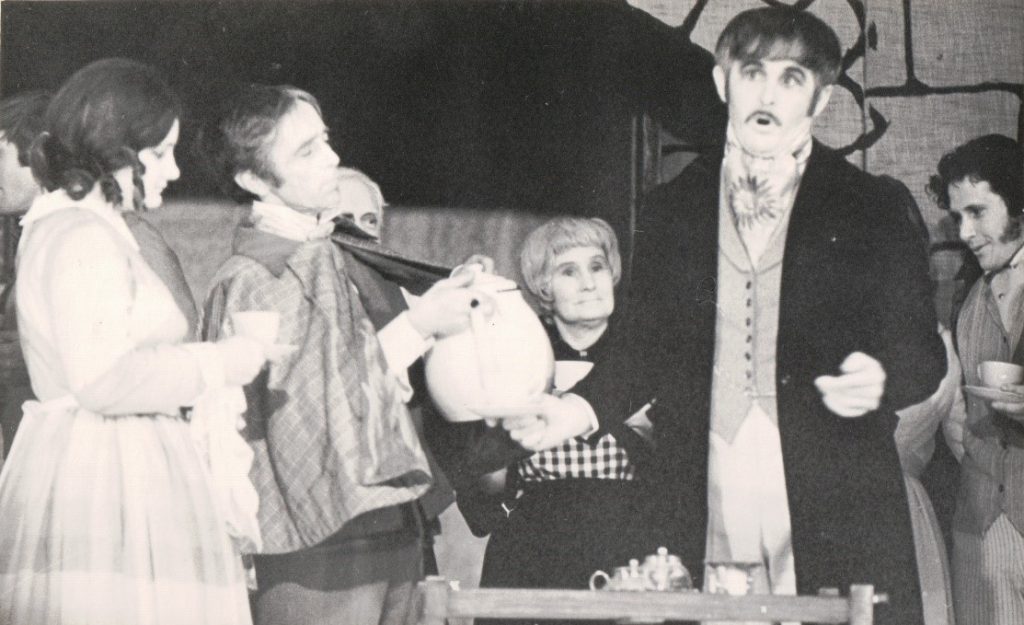
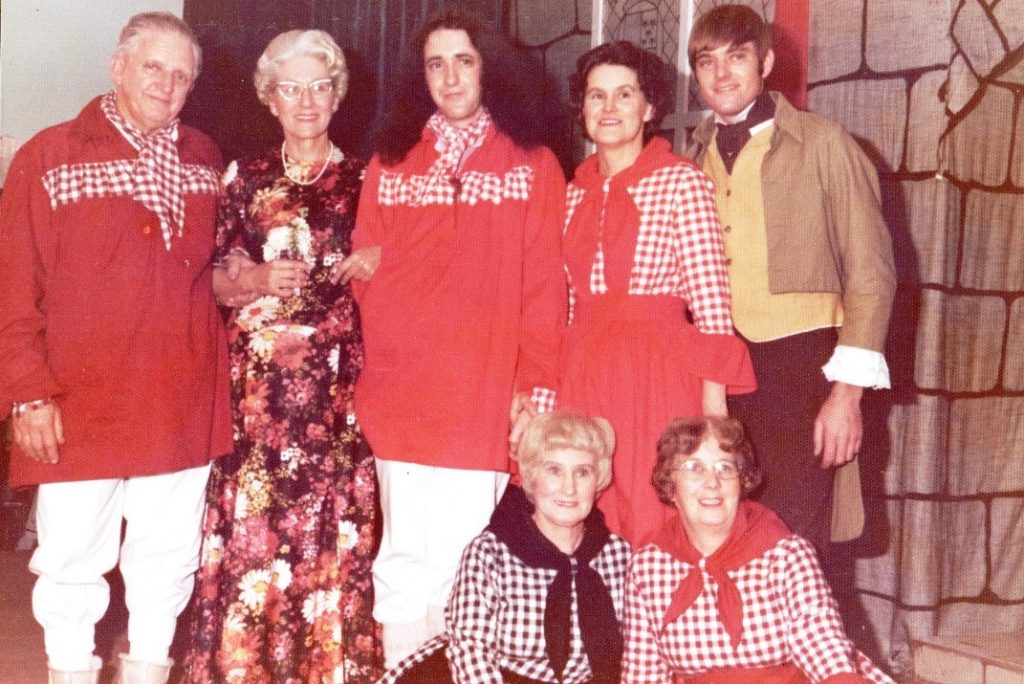
Chris Soley, Val Voysey, Martin Kisbey, Marion Smith and Bess Robbins at front.
